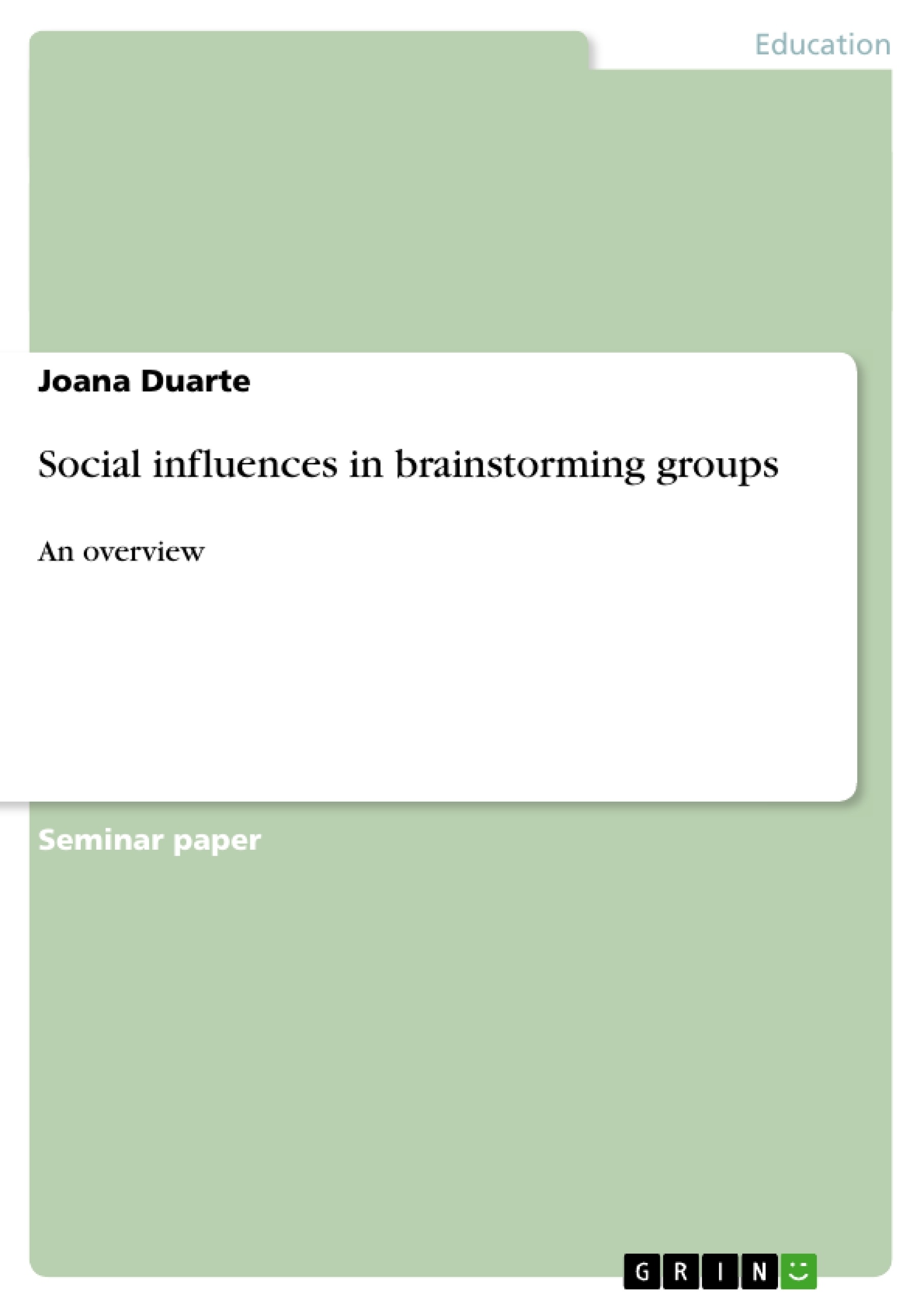The paper provides both a historical view of brainstorming and the standpoint of the present research on this field. Starting with a definition of the concept, the findings of the American advertiser Alex Osborn will be then presented and discussed, as well as the several directions that the brainstorming literature acquired after this initial research.
The main focus of the paper will be the Social / Cognitive Influence Model of Performance of Group Brainstorming, proposed by Paulus et al., as well as some of the research conducted by this group of psychologists. However, other researchers will be quoted and their results compared and discussed.
At the end, some information will be given about a relatively recent way of brainstorming – Electronic brainstorming where some studies will be presented and the use of technology in group tasks will be discussed.
The final discussion will critically review the main points focussed throughout the project and deepen some questions about the brainstorming discussion.
Inhaltsverzeichnis (Table of Contents)
- Introduction
- Brainstorming - from Osborn to Gallupe
- Osborn's brainstorming rules
- The study from M. Diehl & Wolfgang Stroebe (1987)
- Social Comparison Processes - Festinger (1954)
- The research of Paulus, Dzindolet & Camacho
- The study from Gallupe et al. (1991)
- Conclusions
- References
Zielsetzung und Themenschwerpunkte (Objectives and Key Themes)
This project aims to provide a historical overview of brainstorming and explore current research in this field. The focus is on the Social/Cognitive Influence Model of Performance of Group Brainstorming proposed by Paulus et al. and its supporting research. The project also discusses the evolution of brainstorming from its origins with Alex Osborn to the use of technology in group tasks, including electronic brainstorming.
- The history of brainstorming
- The Social/Cognitive Influence Model of Performance of Group Brainstorming
- Social influence in brainstorming groups
- The effectiveness of brainstorming techniques
- The role of technology in group brainstorming
Zusammenfassung der Kapitel (Chapter Summaries)
The introduction provides a brief overview of the project's scope, including its focus on the historical development of brainstorming and the Social/Cognitive Influence Model. It also hints at the discussion of electronic brainstorming and the project's critical review of key points.
The chapter "Brainstorming - from Osborn to Gallupe" traces the origins of brainstorming to Alex Osborn's work in the 1950s and the development of his four rules for brainstorming. The chapter explores the study by Diehl and Stroebe (1987), which investigated the effectiveness of brainstorming and provided a critical perspective on Osborn's rules. It also examines the influence of Festinger's social comparison theory (1954) on the understanding of group dynamics in brainstorming.
Schlüsselwörter (Keywords)
The main keywords and focus topics of this work include brainstorming, group dynamics, social influence, cognitive influence, creative thinking, social comparison theory, electronic brainstorming, and group performance.
- Quote paper
- Joana Duarte (Author), 2008, Social influences in brainstorming groups, Munich, GRIN Verlag, https://www.grin.com/document/139164




